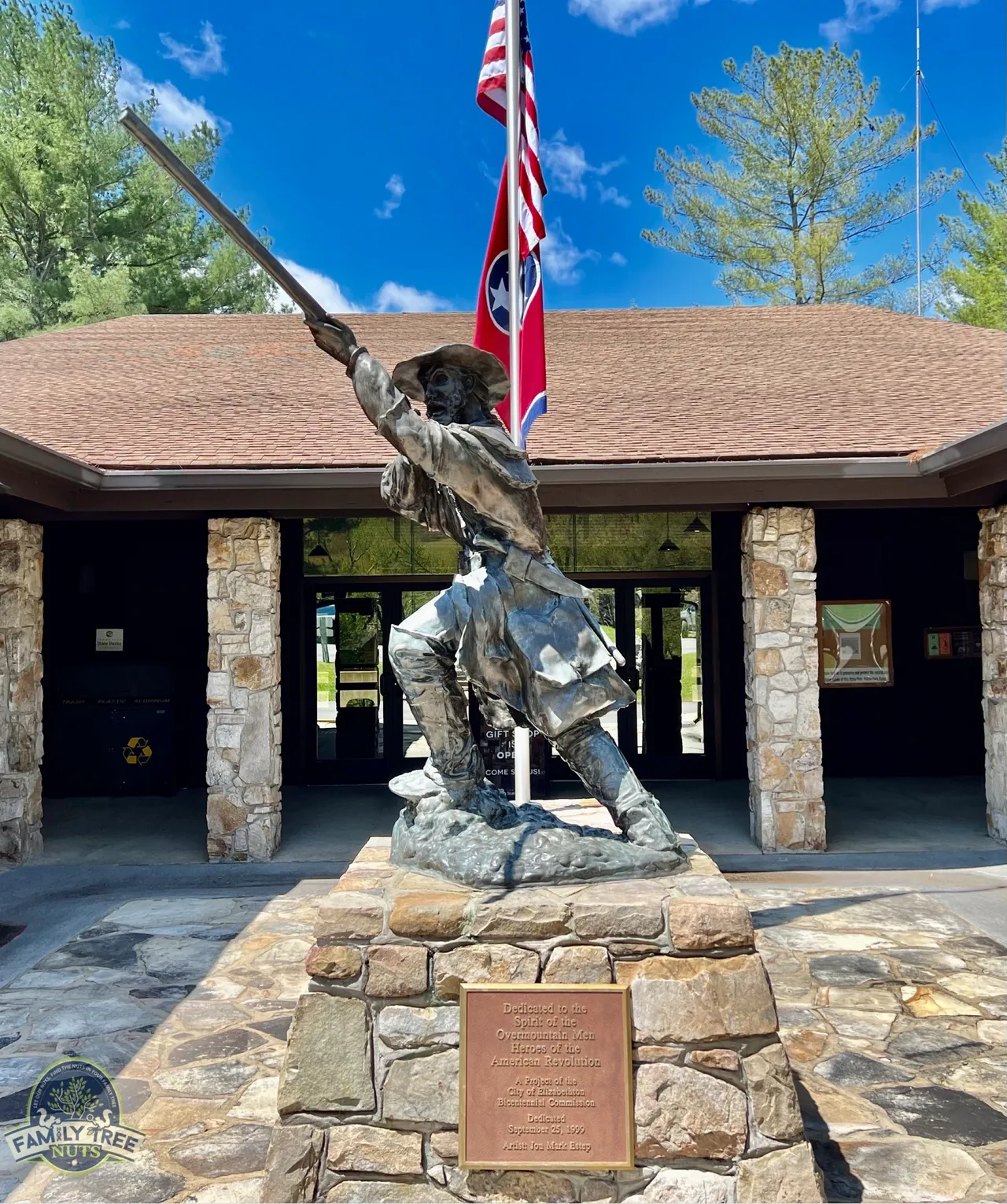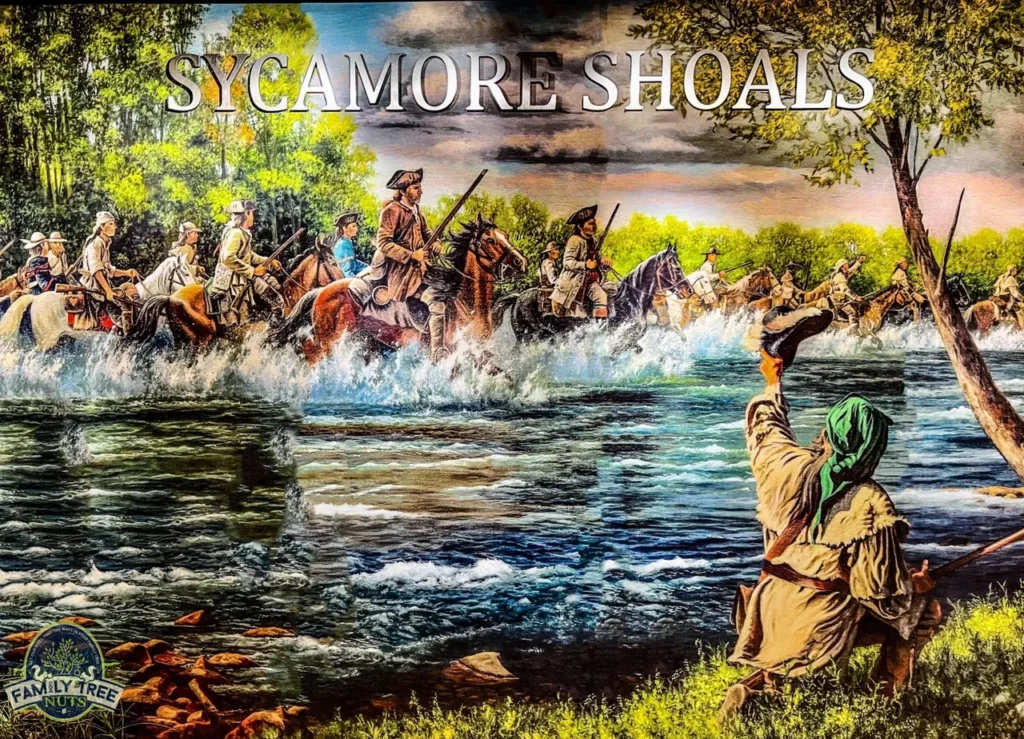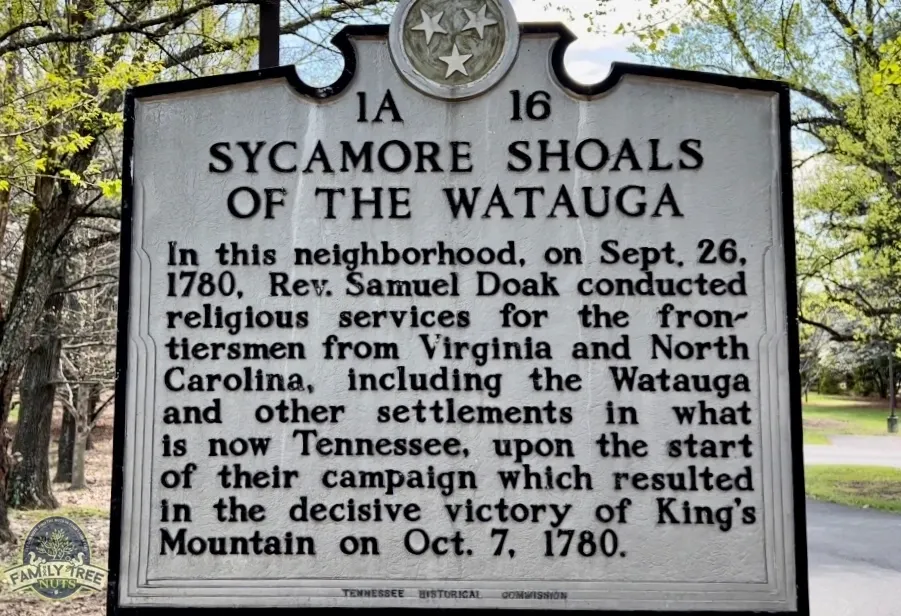
OVERMOUNTAIN MEN TURN TIDE OF REVOLUTIONARY WAR
The brave men that gathered at what is now known as Sycamore Shoals State Historic Park, in Elizabethton, Tennessee had a huge impact on ending the American Revolutionary War. Approximately, 1,100 militia men gathered here, from all over the area on September 25, 1780, to cross over the Appalachian Mountains, and to engage British loyalists at the Battle of Kings Mountain, which historians say was the beginning of the end of the American Revolution. In the early years, settlers came down the Great Valley out of Virginia, and through the Unaka Gap from North Carolina, and they settled all in this area of what is now Tennessee.

There were three main settlements in the area, the Watauga, the Carters Valley, and the Nolichucky. In 1772, the settlers in the three associations got together and they formed the government called the Watauga Association. A fort was built on the Watauga River to defend the settlers from Cherokee Indian attacks, most of which were instigated by the British government. Then in 1775, Richard Henderson, Nathaniel Hart, and Daniel Boone negotiated on behalf of the Transylvania Company for the purchase of a large tract of land from the Cherokee Indians. That tract of land was millions of acres, which stretched from East Tennessee, all the way down into the Cumberland Valley, where Nashville is, and up into Central Kentucky, and Eastern Kentucky. In the meantime, frontiersman and their families continued to move into this part of the world and to populate the area.
At the same time, the American Revolution was raging back east, across the Appalachian Mountains, on the East Coast, and the British Army was not having any success in New England, and in the middle colonies, so they decided to move the base of their operations to the Southern colonies. They defeated the Continental Army in Charleston, South Carolina,
and British General Lord Charles Cornwallis devised a strategy to move up through South Carolina, and into North Carolina, to subdue the colonies. Cornwallis also thought that he would find a lot of loyalists in that part of the country that would support them. As Lord Cornwallis moved north up through South Carolina, he had Major Patrick Ferguson on his western flank to protect his army’s movement. Major Ferguson issued a proclamation to the people of this area, that told them that if they did not swear allegiance to the British Crown, he and his army, were going to cross the Appalachians, burn their farms, and hang their leaders.

Upon hearing that Ferguson was going to put the area to “fire and sword”, American Patriots, now called the “Overmountain Men”, gathered and mustered to the mountains to meet Major Ferguson and call his bluff before he could come burn their settlements. They met him at the Battle of Kings Mountain, on October 7, 1780, and defeated the British Army which included their Tory militia. This was the first major setback of the British southern strategy, and because of the loss of protection on the western flank, General Cornwallis did not proceed north into North Carolina, he pulled back into Charleston, and shortly thereafter boarded ships for Yorktown, Virginia. Later in Yorktown, he was defeated, and surrendered to the Continental Army, which ended the American Revolutionary War.
The back-country militia men had demonstrated that they could plan, and execute in battle, and would be a force to be reckoned with. In response to this victory, General George Washington proclaimed to his own army, that the crude, spirited and hearty volunteers, who crossed the mountains and won the battle, demonstrated the spirit of the people of the country, and the American Revolution.
Today, The Sycamore Shoals State Historic Park sit on the location that the Overmountain Men mustered before taking on their epic mission. They park has a museum that tells about the Overmountain Men, hiking trails, recreation spots, and a replica of Fort Watauga. Thousands every year attend the outdoor drama here.
Brave American backwoods patriots like John Crockett, the father of Davy Crockett, Daniel Boone, John Donaldson, James Robertson, and John Sevier, and many others, were all at one time, at Sycamore Shoals. It’s humbling to stand where so much history has taken place. Be sure to see the video at the link below from this location.
-Scott Denney, Historian, Family Tree Nuts
